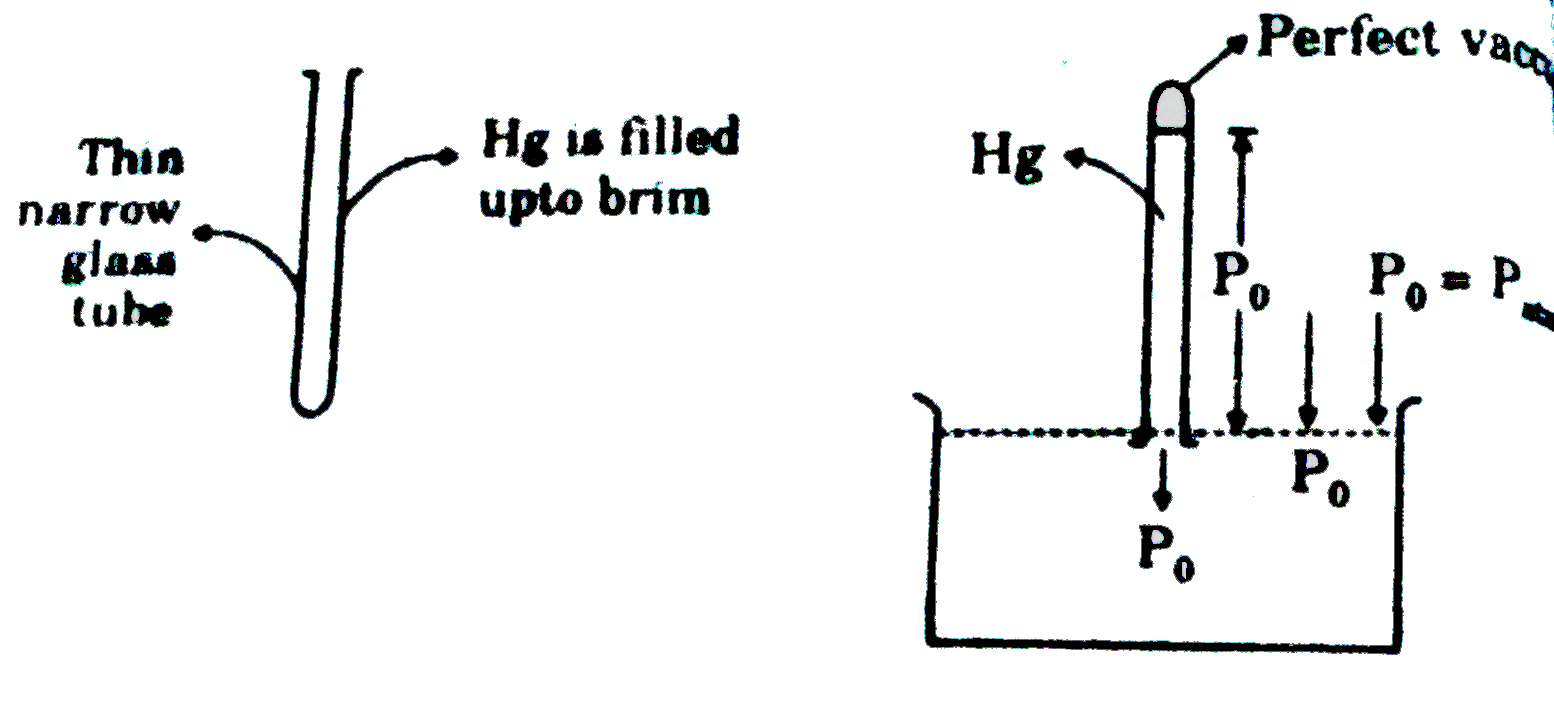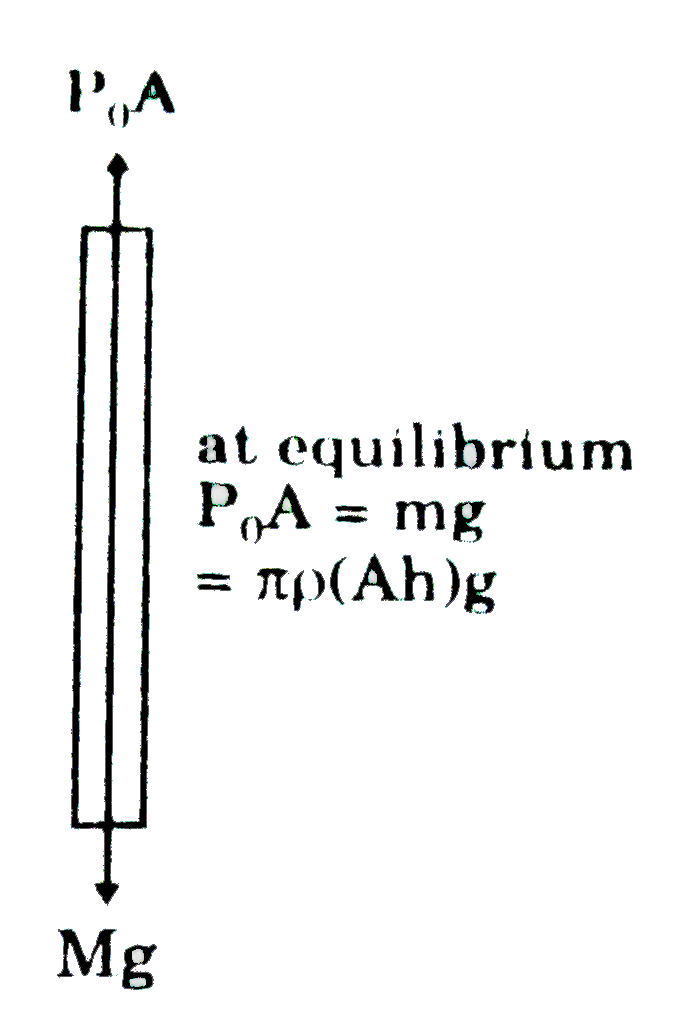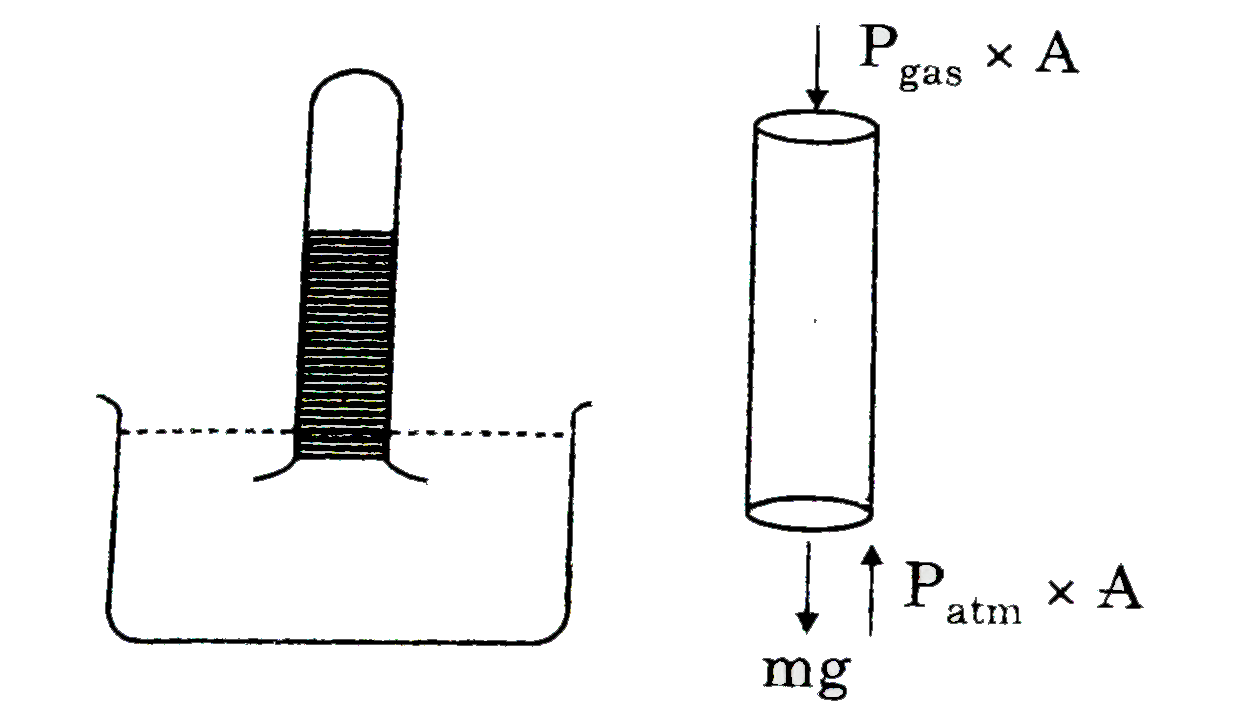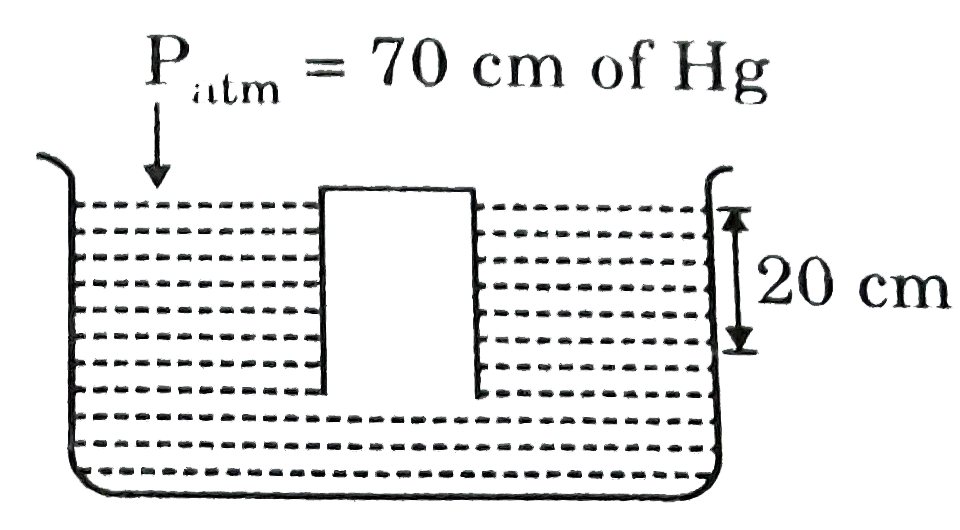In case the student encounters an error the teacher encourages him to deal with it a student is measuring morning and afternoon temperatures for a school project using thermal infrared gun instrument the instrument is calibrated incorrectly and produces a cold bias of 7/10 of a de green in all the temperature measurements how should the student deal with this error
the student should recalibrate the instrument and redo the project
since it is not a major error the student can ignore it
this is a systematic error and the student should take it into consideration when analyzing the results by increasing the temperatures 7/10 of a degree
this is a random error so the student should only mention it as a potential problem in interpreting the results
The correct Answer is:B
Step by step video, text & image solution for In case the student encounters an error the teacher encourages him to deal with it a student is measuring morning and afternoon temperatures for a school project using thermal infrared gun instrument the instrument is calibrated incorrectly and produces a cold bias of 7/10 of a de green in all the temperature measurements how should the student deal with this error by Cdp experts to help you in doubts & scoring excellent marks in Class 14 exams.
Related Playlists
Similar Practice Problems
- Question 1 - Select One
A student performed the resonance tube experiment by using a tuning fork of frequency 512 Hz. He obtained the first and second resonances at 30.7 cm and 63.2 cm respectively . What was the error in the measurement of the velocity of sound, if the actual speed of sound at the temperature of the experiment was 330 m/s ?
A80 cm/sB140 cm/sC180 cm/sD280 cm/s - Question 1 - Select One
(1) To elaborate briefly on these characteristics and dimensions that the author is talking about - NRMs are general tests intended to be used to classify students by percentile for measuring either apitude or proficiency for admissions into or placement within a program.
(2) Contrastingly, the CRM, such as a locally produced achievement tese, measures absolute performance that is compared only with the learning objective, hence a perfect score is theoretically obtainable by all students who have a mastery of the pre-specified material, or conversely, all students may fail the test.
(3) In most of these books, the authors classify a measurement strategy as either norm-referenced (NRM ) or criterion-referenced (CRM).
(4) Another author points out how the type of interpretation that an NRM offers is the reflative performance of the students compared with that of the students compared with that of all the others resulting in, ideally, a bell curve distribution.
(5) Numerous books on constructing and using language tests have been written by various authors.
(6) CRMs, on the other hand, are more specific, achievement or diagonstic tests intended to be used for motivating students by measuring to what percent they have achieved mastery of the thought or learned material.
(7) One of the authors clearly delineates the differences of these two types by focusing on the categories of "test characteristics" and "logistical dimensions."
Which of the following should be the SEVENTH (LAST) sentence after rearragement ?A1B2C3D4 - Question 1 - Select One
(1) To elaborate briefly on these characteristics and dimensions that the author is talking about - NRMs are general tests intended to be used to classify students by percentile for measuring either apitude or proficiency for admissions into or placement within a program.
(2) Contrastingly, the CRM, such as a locally produced achievement tese, measures absolute performance that is compared only with the learning objective, hence a perfect score is theoretically obtainable by all students who have a mastery of the pre-specified material, or conversely, all students may fail the test.
(3) In most of these books, the authors classify a measurement strategy as either norm-referenced (NRM ) or criterion-referenced (CRM).
(4) Another author points out how the type of interpretation that an NRM offers is the reflative performance of the students compared with that of the students compared with that of all the others resulting in, ideally, a bell curve distribution.
(5) Numerous books on constructing and using language tests have been written by various authors.
(6) CRMs, on the other hand, are more specific, achievement or diagonstic tests intended to be used for motivating students by measuring to what percent they have achieved mastery of the thought or learned material.
(7) One of the authors clearly delineates the differences of these two types by focusing on the categories of "test characteristics" and "logistical dimensions."
Which of the following should be the FIFTH sentence after rearragement ?A1B2C3D6 - Question 1 - Select One
(1) To elaborate briefly on these characteristics and dimensions that the author is talking about - NRMs are general tests intended to be used to classify students by percentile for measuring either apitude or proficiency for admissions into or placement within a program.
(2) Contrastingly, the CRM, such as a locally produced achievement tese, measures absolute performance that is compared only with the learning objective, hence a perfect score is theoretically obtainable by all students who have a mastery of the pre-specified material, or conversely, all students may fail the test.
(3) In most of these books, the authors classify a measurement strategy as either norm-referenced (NRM ) or criterion-referenced (CRM).
(4) Another author points out how the type of interpretation that an NRM offers is the reflative performance of the students compared with that of the students compared with that of all the others resulting in, ideally, a bell curve distribution.
(5) Numerous books on constructing and using language tests have been written by various authors.
(6) CRMs, on the other hand, are more specific, achievement or diagonstic tests intended to be used for motivating students by measuring to what percent they have achieved mastery of the thought or learned material.
(7) One of the authors clearly delineates the differences of these two types by focusing on the categories of "test characteristics" and "logistical dimensions."
Which of the following should be the FIRST sentence after rearragement ?A7B2C3D5 - Question 1 - Select One
(1) To elaborate briefly on these characteristics and dimensions that the author is talking about - NRMs are general tests intended to be used to classify students by percentile for measuring either apitude or proficiency for admissions into or placement within a program.
(2) Contrastingly, the CRM, such as a locally produced achievement tese, measures absolute performance that is compared only with the learning objective, hence a perfect score is theoretically obtainable by all students who have a mastery of the pre-specified material, or conversely, all students may fail the test.
(3) In most of these books, the authors classify a measurement strategy as either norm-referenced (NRM ) or criterion-referenced (CRM).
(4) Another author points out how the type of interpretation that an NRM offers is the reflative performance of the students compared with that of the students compared with that of all the others resulting in, ideally, a bell curve distribution.
(5) Numerous books on constructing and using language tests have been written by various authors.
(6) CRMs, on the other hand, are more specific, achievement or diagonstic tests intended to be used for motivating students by measuring to what percent they have achieved mastery of the thought or learned material.
(7) One of the authors clearly delineates the differences of these two types by focusing on the categories of "test characteristics" and "logistical dimensions."
Which of the following should be the SECOND sentence after rearragement ?A1B2C3D4 - Question 1 - Select One
(1) To elaborate briefly on these characteristics and dimensions that the author is talking about - NRMs are general tests intended to be used to classify students by percentile for measuring either apitude or proficiency for admissions into or placement within a program.
(2) Contrastingly, the CRM, such as a locally produced achievement tese, measures absolute performance that is compared only with the learning objective, hence a perfect score is theoretically obtainable by all students who have a mastery of the pre-specified material, or conversely, all students may fail the test.
(3) In most of these books, the authors classify a measurement strategy as either norm-referenced (NRM ) or criterion-referenced (CRM).
(4) Another author points out how the type of interpretation that an NRM offers is the reflative performance of the students compared with that of the students compared with that of all the others resulting in, ideally, a bell curve distribution.
(5) Numerous books on constructing and using language tests have been written by various authors.
(6) CRMs, on the other hand, are more specific, achievement or diagonstic tests intended to be used for motivating students by measuring to what percent they have achieved mastery of the thought or learned material.
(7) One of the authors clearly delineates the differences of these two types by focusing on the categories of "test characteristics" and "logistical dimensions."
Which of the following should be the THIRD sentence after rearragement ?A1B2C7D4 - Question 1 - Select One
A barometer is an instrument that is used for the measurement of pressure The construction of the barometer is as follows:
A thin narrow calibrated capillary tube is filled to the brim with a liquid such as mercury and is inverted into a through filled with the same fluid Now depending on the external atmospheric pressure the level of the inside capillary comes to rest, then the net forces on the column should be balanced Applying force balance we get Patm×A=m×g
(A is the cross-sectional area of the capillary tube) if ρ is the density of the fluid, then m=ρ×g×h
(h is the height to which mercury has risen in the capillary)
Hence Patm×A=(ρ×g×h)×AorPatm=ρgh
Faulty Barometer:
An ideal barometer will show a correct reading only if the space above the mercury column is vacuum but in case if some gas column is trapped in the space above the mercury column then the barometer is classified as a faulty barometer. The reading of such a barometer will be less than the true pressure

For such a faulty barometer
P0A=mg+PgasA
P0=ρhg+Pgas
or ρgh=P0−Pgas
A tube closed at one end is dipped in mercury as shown in figure such that the closed surface coincides with the mercury level in the container By how much length of the tube should be extended such that the level of Hg in the tube is 5 cm below the mercury level inside the container? (Assume temperature remains constant)


 A18 cmB19 cmC24 cmD30 cm
A18 cmB19 cmC24 cmD30 cm
Similar Questions
EIGHT-YEAR OLD PIHU TIWARI RUNS A MARATHON EVERY MORNING WITH NEARLY TWELVE KILOS ON HER BACK. AT LEAST THAT’S WHAT HER WALK FROM THE SCHOOL GATE TO HER SECOND FLOOR CLASSROOM FEELS LIKE. SHE DOES NOT JUST GET TIRED BUT OFTEN PANTS HER WAY UP THE STAIR CASE. SHE IS THIN AND WEIGHTS TWENTY-NINE KILOGRAMS. AND EVERYDAY, SHE HAS TO CARRY A BAG WHICH IS ALMOST HALF HER WEIGHT. PIHU MAY BE SPARED, AS HUMAN RESOURCE DEVELOPMENT (HRD) MINISTRY RECENTLY PROPOSED TO COME UP WITH A SYSTEM IN WHICH CHAPTERS OF A BOOK CAN BE SEGREGATED FOR EVERY TEAM MAKING THE BAGS LIGHTER. SCHOOLS ARE TRYING TOO. IN ALL BRANCHES OF BALBHARTI PUBLIC SCHOOL, THE WEIGHT OF BAGS IS REGULARLY MONITORED. THE TEACHERS WEIGH THE BAG REGULARLY AND A REPORT IS SUBMITTED TO THE PRINCIPAL. AFTER GOING THROUGH THEIR REPORTS, SENSITIZATION PROGRAMMES ARE HELD FOR PARENTS AND THEY ARE EXPLAINED ON WHAT BOOKS ARE TO BE BROUGHT ON A PARTICULAR DAY. ALSO A ROASTER HAS BEEN DEVISED TO MAKE SURE HOMEWORK FOR ALL SUBJECTS IS NOT GIVEN ON THE SAME DAY. ALSO CHILDREN ARE ALLOWED TO LEAVE THEIR MUSICAL INSTRUMENTS, SPORTS ITEMS, DRAWING FILES ETC. IN THE SCHOOL. ACKNOWLEDGING THAT A MAJORITY OF CHILDREN AGED BELOW TEN SUFFER FROM ORTHOPAEDIC PROBLEMS BECAUSE OF HEAVY BAGS. MAHARASHTRA RECENTLY FIXED THE RESPONSIBILITY OF REDUCING BAG WEIGHT WITH THE SCHOOL PRINCIPAL. ALSO, THE MAXIMUM WEIGHT TO BE CARRIED BY STUDENTS OF CLASSES ONE TO EIGHT HAS BEEN FIXED BETWEEN 1.8 KG AND 3.4 KG. G.D. GOENKA’S SCHOOL HAS DEVISED A STRATEGY TO REDUCE THE WEIGHT OF SCHOOL BAG. IN THIS SCHOOL HOMEWORK IS SENT AND SUBMITTED ONLINE. IN SPRINGDALES SCHOOL, THE STUDENTS ARE DIVIDED INTO GROUPS WITH EACH USING ONE TEXTBOOK. SOME PARENTS COMPLAIN THAT SCHOOLS OFTEN FAIL TO PROVIDE INDIVIDUAL LOCKERS AND FORCE CHILDREN TO CARRY BOOKS EVERYDAY. ALSO, SCHOOL’S FASCINATION WITH FANCY BOOKS SUPPLIED BY PRIVATE PUBLISHERS ALSO ADD TO BAG WEIGHT. MOREOVER, STUDENTS OFTEN CARRY FANCY BAGS AND STEEL BOTTLES WHICH ADD UPTO A KILO TO THEIR LOAD. ON THE BASIS OF YOUR READING OF THE ABOVE PASSAGE, MAKES NOTES ON IT, USING HEADINGS AND SUB-HEADINGS. USE RECOGNIZABLE ABBREVIATIONS AND A FORMAT YOU CONSIDER SUITABLE.
View SolutionEIGHT-YEAR OLD PIHU TIWARI RUNS A MARATHON EVERY MORNING WITH NEARLY TWELVE KILOS ON HER BACK. AT LEAST THAT’S WHAT HER WALK FROM THE SCHOOL GATE TO HER SECOND FLOOR CLASSROOM FEELS LIKE. SHE DOES NOT JUST GET TIRED BUT OFTEN PANTS HER WAY UP THE STAIR CASE. SHE IS THIN AND WEIGHTS TWENTY-NINE KILOGRAMS. AND EVERYDAY, SHE HAS TO CARRY A BAG WHICH IS ALMOST HALF HER WEIGHT. PIHU MAY BE SPARED, AS HUMAN RESOURCE DEVELOPMENT (HRD) MINISTRY RECENTLY PROPOSED TO COME UP WITH A SYSTEM IN WHICH CHAPTERS OF A BOOK CAN BE SEGREGATED FOR EVERY TEAM MAKING THE BAGS LIGHTER. SCHOOLS ARE TRYING TOO. IN ALL BRANCHES OF BALBHARTI PUBLIC SCHOOL, THE WEIGHT OF BAGS IS REGULARLY MONITORED. THE TEACHERS WEIGH THE BAG REGULARLY AND A REPORT IS SUBMITTED TO THE PRINCIPAL. AFTER GOING THROUGH THEIR REPORTS, SENSITIZATION PROGRAMMES ARE HELD FOR PARENTS AND THEY ARE EXPLAINED ON WHAT BOOKS ARE TO BE BROUGHT ON A PARTICULAR DAY. ALSO A ROASTER HAS BEEN DEVISED TO MAKE SURE HOMEWORK FOR ALL SUBJECTS IS NOT GIVEN ON THE SAME DAY. ALSO CHILDREN ARE ALLOWED TO LEAVE THEIR MUSICAL INSTRUMENTS, SPORTS ITEMS, DRAWING FILES ETC. IN THE SCHOOL. ACKNOWLEDGING THAT A MAJORITY OF CHILDREN AGED BELOW TEN SUFFER FROM ORTHOPAEDIC PROBLEMS BECAUSE OF HEAVY BAGS. MAHARASHTRA RECENTLY FIXED THE RESPONSIBILITY OF REDUCING BAG WEIGHT WITH THE SCHOOL PRINCIPAL. ALSO, THE MAXIMUM WEIGHT TO BE CARRIED BY STUDENTS OF CLASSES ONE TO EIGHT HAS BEEN FIXED BETWEEN 1.8 KG AND 3.4 KG. G.D. GOENKA’S SCHOOL HAS DEVISED A STRATEGY TO REDUCE THE WEIGHT OF SCHOOL BAG. IN THIS SCHOOL HOMEWORK IS SENT AND SUBMITTED ONLINE. IN SPRINGDALES SCHOOL, THE STUDENTS ARE DIVIDED INTO GROUPS WITH EACH USING ONE TEXTBOOK. SOME PARENTS COMPLAIN THAT SCHOOLS OFTEN FAIL TO PROVIDE INDIVIDUAL LOCKERS AND FORCE CHILDREN TO CARRY BOOKS EVERYDAY. ALSO, SCHOOL’S FASCINATION WITH FANCY BOOKS SUPPLIED BY PRIVATE PUBLISHERS ALSO ADD TO BAG WEIGHT. MOREOVER, STUDENTS OFTEN CARRY FANCY BAGS AND STEEL BOTTLES WHICH ADD UPTO A KILO TO THEIR LOAD. ON THE BASIS OF YOUR READING OF THE ABOVE PASSAGE, MAKES NOTES ON IT, USING HEADINGS AND SUB-HEADINGS. USE RECOGNIZABLE ABBREVIATIONS AND A FORMAT YOU CONSIDER SUITABLE.
View Solution

